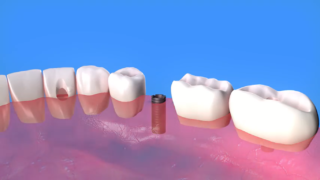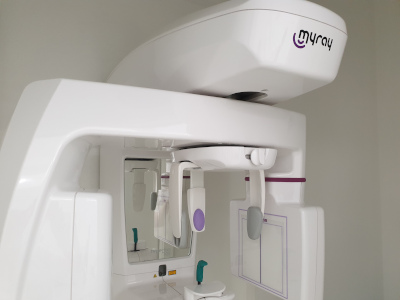
There are various types of dental implants and different techniques. Implants have different sizes, heights and diameters. They range from 7 mm to 15 mm in height, and 3 to 5 mm in diameter. The most appropriate size is chosen according to the procedure to be performed and the size of the person’s bone. Similarly, a cylindrical, threaded or conical shape, among others, is chosen according to each specific case.
Depending on your needs, the specialist determines the best dental implant option and selects the brand.
Types of implants
There are two main types of implants:
Subperiosteal implants – Subperiosteal implants are placed under the gums, but above the jaw bone. If the patient does not have a healthy jaw bone or when there is a bone deficit, this may be a good option. This type of implant is recommended for people with bone loss who don’t want to undergo bone reconstruction procedures. As in endosteal implants, it implies attaching artificial teeth.
Endosteal implants – These are the most widely used implants in the world. They are fused directly to the jaw bone, under the gums. They are usually made of titanium and shaped like small cylindrical screws. Titanium is a high-quality material, very resistant to corrosion and compatible with the human system. For an endosteal implant to be successful, it is necessary to have a large amount of bone to provide a safe base. The new tooth is attached to the implant once the wound has healed.
Various techniques used in dental implants
There are various types of dental implants, as well as different techniques. If you are interested in dental implants, please read our article on the various techniques available to rehabilitate people with no teeth. The various techniques include:
All-on-4 – The all-on-four technique involves placing four implants in the upper jaw or in the mandible. They are placed in the available bone, avoiding the use of the bone grafting technique. This means that it is used in people with a small amount of bone in the jaw to rehabilitate a complete jaw bone. The prosthesis is screwed to the implants using special metal rods and abutments. This technique allows placing immediate load implants or teeth on the same day, or implants with bone integration and adaptation of removable prostheses. However, the original all-on-4 concept was intended for the same-day replacement of teeth. This means that temporary prostheses are attached to the implants once these are placed in the jaw. Six months later, the temporary prostheses are replaced with definitive ones.
Immediate load implants – These are also known as same-day implants. If you’re looking for a quick fixed teeth solution, this might be the best option for you. The ideal candidates for same-day teeth are people with good bone quality and density.
Mini-implants– These implants have a narrow diameter. They are smaller than ordinary implants and are placed using less invasive techniques. They are widely used to correct misaligned teeth using orthodontic techniques or to stabilise a lower removable prosthesis. This technique is used in people with removable dentures to attach them to the jaw.
Treatment planning using 3D technology

There are various 3D imaging software solutions, as well as highly-accurate surgical intervention planning software. Treatments are becoming faster and more predictable. With these programmes, your dentist can analyse the anatomy of your jaw and determine the most appropriate location for the implants. Surgeries are more effective, recovery time is shorter, as is the likelihood of failure.
Osseointegration, i.e., the integration of the dental implant, is the process by which proper stability between the surface of the small titanium screw, the jaw bone and the soft tissues that surround it is achieved.
Once integrated, the implant is strongly anchored to the bone.

